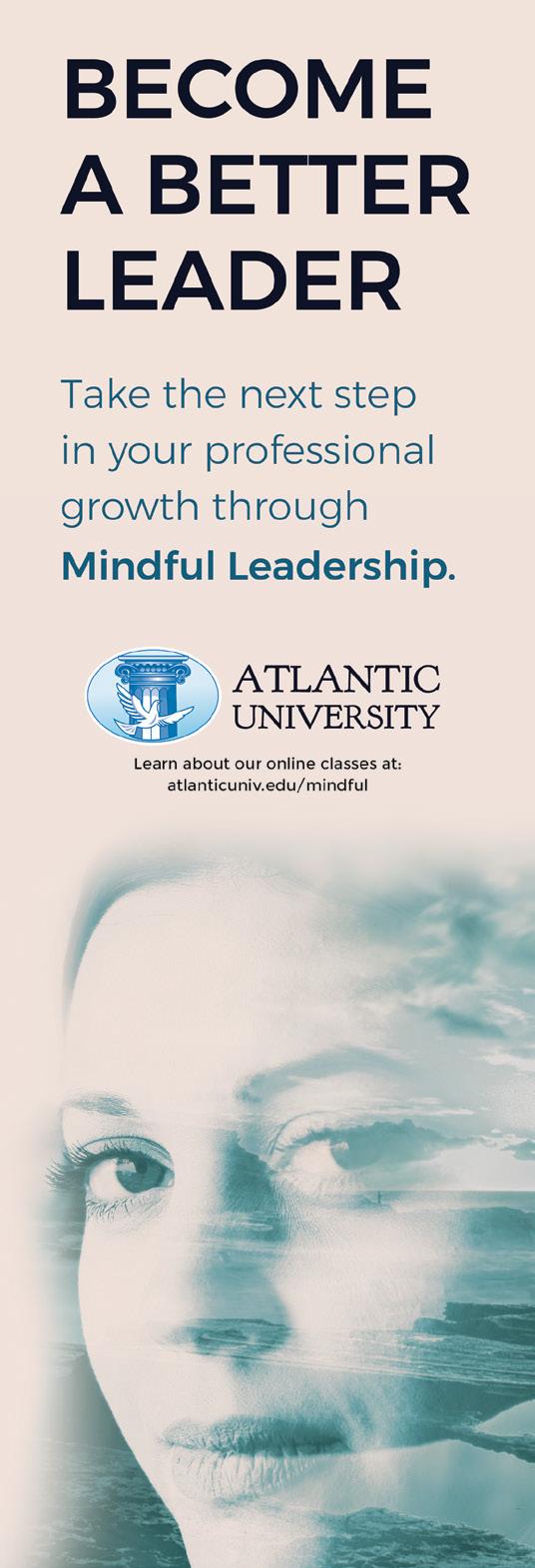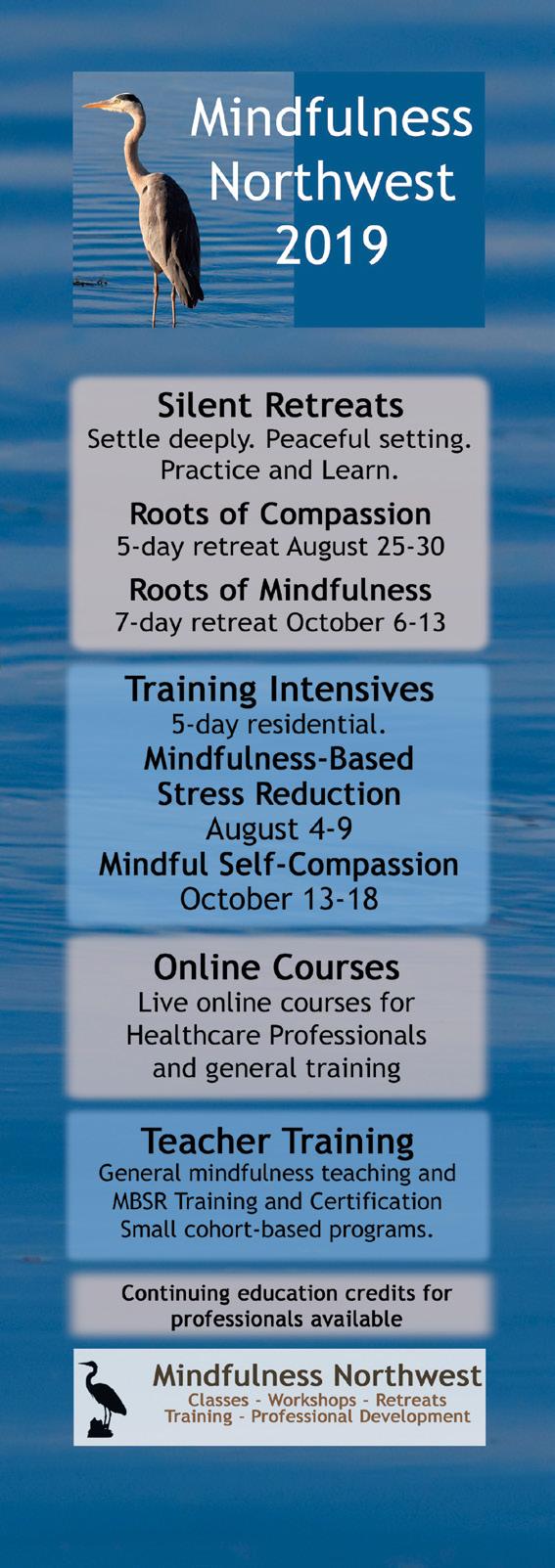
5 minute read
PODCAST Reviews
CBC RADIO
Episode: Wearables go beyond fitness tracking to help people with chronic health conditions
Advertisement
Rapidly evolving technologies are revolutionizing health science, a prime example being wearable health trackers—think the FitBit, but capable of feats like tracking the blood glucose of diabetics, or monitoring blood pressure, via a tiny patch on the skin. For people with chronic illness, this may take the constant vigilance and guesswork out of maintaining health. But for healthy people, these devices—like self-driving cars that “remember” the route for us—may tempt us to ignore the feedback we’re always getting from our body, rather than growing to better understand that feedback.
ON BEING WITH KRISTA TIPPETT
Episode: The Magic Shop of the Brain, with Dr. James Doty
Most people don’t appreciate “the power of their intention to change everything,” says James Doty, a neurosurgeon who also directs Stanford’s Center for Compassion and Altruism Research and Education. He’s talking about the scarcely understood potential of the human brain, but also about the equally miraculous power of compassion arising from it. Doty—for whom learning present-moment awareness as a teenager was transformative—considers our brains’ suppleness (that is, neuroplasticity) to hold the key to creating “an environment where we ultimately can flourish, and give those around us the opportunity to flourish.”
FREAKONOMICS RADIO
Episode: Think Like a Winner
When we say we’re “off our game,” it’s understood that there is a psychic aspect involved—a preoccupation, a case of the “blahs,” a nagging self-doubt. Whatever we’re seeking to improve at in life, being able to get back on our game is a crucial skill. In this episode, some well-known athletes describe how their mental game impacts their competitive edge. For many professional athletes, for example, game prep includes affirmative self-talk and visualization. If that sounds a bit woo-woo, just take it from baseball legend Bob Tewksbury: “Confidence is a choice. A lot of people think it’s a feeling. But if you wait for that feeling, it may never come.”
Build Resilience. Uncertainty is like fertilizer for difficult emotions. This meditation reminds you that life is always in flux and the most courageous thing you can do is slow down, turn toward your difficult emotions, and meet them with compassion. By staying with both the highs and lows of your inner experience, over time you become more resilient, meeting each moment with strength.
Respond with Calm. Anxious feelings often provoke us to act in habitual ways. For example, when you’re anxious you may find yourself chewing on your nails or lashing out at close friends. By practicing mindfulness, you can bring awareness to your experience and respond, rather than react, to the moment at hand. This meditation helps you open up, so you can choose whether to engage in a habitual action or simply stay with your feelings.
Create Space. When you dig into the storylines that trigger anxiety—whether it be memories, thoughts, or self-conditioning—you begin to give yourself the space you need to live with more ease. This practice helps you acknowledge your anxious feelings rather than fight them. This is a deep investigative practice that can be challenging at times and is best done when you feel safe, curious, and ready to fully explore your emotions.
SAY WHAT YOU MEAN A Mindful Approach to Nonviolent Communication
Oren Jay Sofer • Shambhala Publications
In this era of polarizing rhetoric coming from everywhere, it’s just too easy to get caught up in the emotion of discourse without really…communicating. Say What You Mean by meditation teacher and mindful communication expert Oren Jay Sofer is surely a book for such charged times. But it’s also a book for anyone simply interested in learning how to deepen their own relational experiences, on any scale. And perhaps that should be all of us, for as Sofer writes, “What we say matters.”
Further, “Intention is the single most powerful and transformative ingredient in dialogue,” he writes. “It shapes our verbal and nonverbal communication, directing the course of a conversation.”
The book is structured around three fundamental skills for mindful communication: Lead with presence; come with curiosity and care; focus on what matters.

Through discussion and example, and supported by reflections and practices to ground the teaching, he helps us explore our own habituated styles of not just communication, but of viewing the world, and how this impacts how we speak to one another, and, importantly, how we listen.
The book is also chock-full of “ahas”—gems and statements that immediately hit you as important and true. Things like:
Everything we do, we do to meet a need.
The less blame and criticism in our words, the easier it will be for others to hear us. When someone trusts that we’re actually interested in understanding them… They can stop defending themselves and just hear what we’re saying.
To say what we mean, we must first know what we mean. To know what we mean, we must listen inwardly and discern what’s true for us.
At the end of each section Sofer offers a useful Q+A to explore the reality of wanting to follow the principles and guidelines of mindful communication, and getting tripped up in real time. The advice is succinct and practical and delivered with a bid for compassion, for ourselves and for everyone just trying to be understood.
In Tune
Music as the Bridge to Mindfulness
Richard Wolf • The Experiment
Award-winning music veteran Richard Wolf came to meditation (as have many musicians) with the need to maintain his health while staying in the heat of creative challenges. What he discovered, however, was a natural convergence of mindfulness and music, where each practice deepened the other. Meant for his fellow musicians at any level, this book offers a plethora of music-based mindfulness exercises for the “transferrable virtues” music can cultivate, from the art of deep listening to (here we see Wolf’s technical savvy) “sympathetic vibrations” and silence. The point, says Wolf, isn’t necessarily becoming a better musician, but being more in harmony with yourself.

Talking About Death
WON’T KILL YOU
The Essential Guide to End-of-Life Conversations
Dr. Kathy Kortes-Miller
• ECW Press
It may be a truism that death is a part of life—but it’s a part of life that our society keeps out of sight and mind, and the avoidance isn’t healthy. The rise of interest in “death cafés,” public forums to host open discussions about death, is a sign we’re becoming more game to acknowledge our own mortality. When this happens, says the author, we’ll be able to “change the conversation from something negative to one of understanding, compassion and acceptance.” Assistant professor of sociology in Thunder Bay, Ontario, Kathy Kortes-Miller offers this book, enriched by her own experience as well as research, to help us all prepare for and have these important conversations with the soon-dying, their families, friends, young children, and colleagues.
MINDFUL EATING ON THE GO Practices for Eating with Awareness, Wherever You Are Jan

Chozen Bays, MD • Shambhala Publications
To consume food or drink, these days, is not only about keeping ourselves alive. It’s about constantly measuring our diets and our body image against the thousands of ads and other messages about food that we’re bombarded with, day in and day out. It’s hardly news that this inescapable reality can do a number on our ability to freely enjoy our food. For those who want to reclaim that freedom, this pocket-size book on the key principles of mindful eating is a great place to start. Chozen Bays teaches how we can discern the “nine aspects of hunger” that we experience, approaching our needs and cravings with full, nonjudgmental awareness, so we can heal our relationship with food.
DRAW & BE HAPPY Art Exercises to Bring You Joy

Tim A. Shaw and Cachetejack • Chronicle Books
This colorful, upbeat book is as delightful to look through as it is to practice from. Full of bright, bold graphics, Draw & Be Happy offers 75 exercises to explore art as a means of mindful relaxation, creative brainstorming, and just plain fun. From practicing “calming curves” to drafting a “visual” shopping list, there are plenty of opportunities for anyone—no matter what their skill level—to grab a pen and paper and explore their creative side. ●







